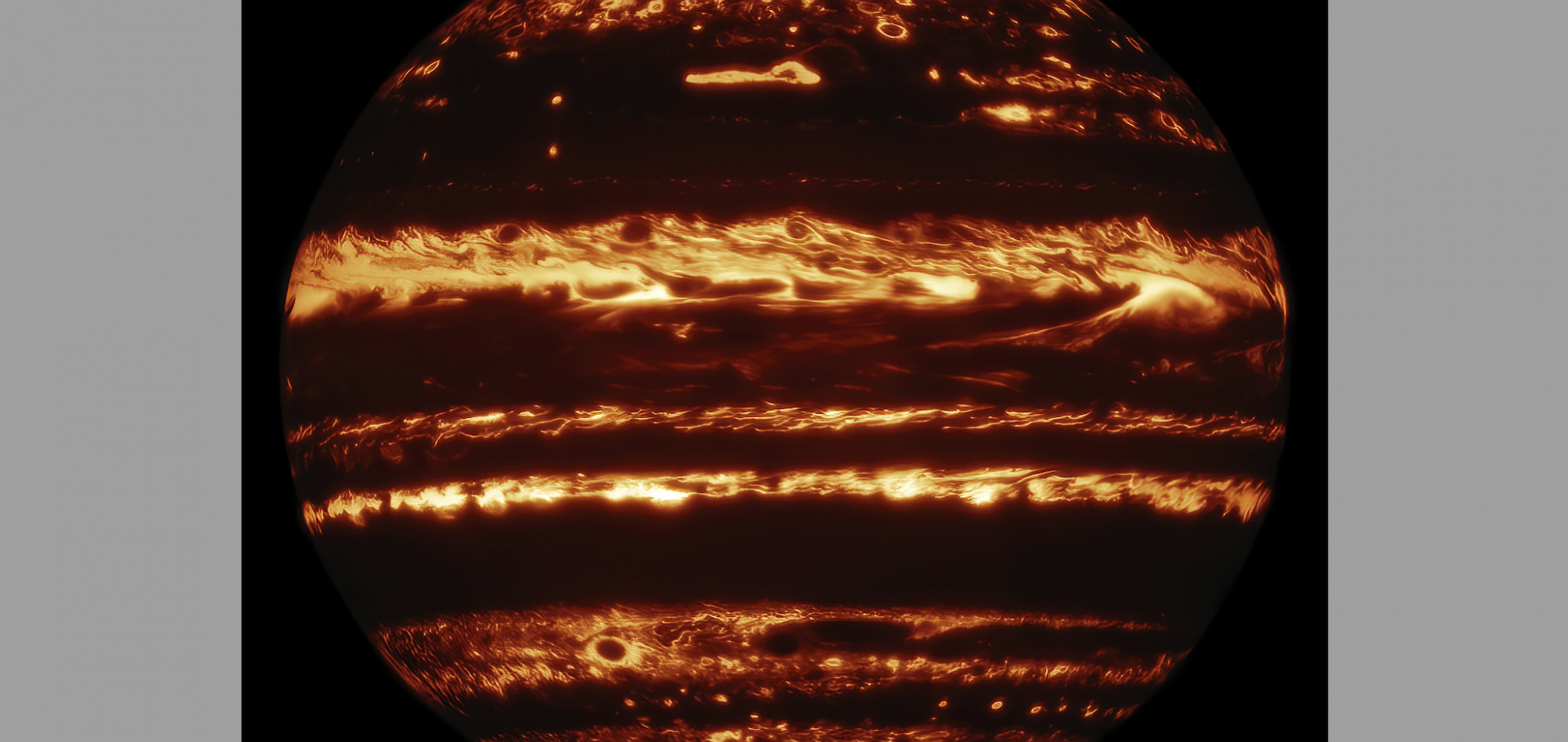Two-dimensional Eclipse Mapping of the Hot-Jupiter WASP-43b with JWST MIRI/LRS
Astronomical Journal IOP Publishing 168:1 (2024) 4
Abstract:
We present eclipse maps of the two-dimensional thermal emission from the dayside of the hot-Jupiter WASP-43b, derived from an observation of a phase curve with the JWST MIRI/LRS instrument. The observed eclipse shapes deviate significantly from those expected for a planet emitting uniformly over its surface. We fit a map to this deviation, constructed from spherical harmonics up to order ℓmax=2 , alongside the planetary, orbital, stellar, and systematic parameters. This yields a map with a meridionally averaged eastward hot-spot shift of (7.75 ± 0.36)°, with no significant degeneracy between the map and the additional parameters. We show the latitudinal and longitudinal contributions of the dayside emission structure to the eclipse shape, finding a latitudinal signal of ∼200 ppm and a longitudinal signal of ∼250 ppm. To investigate the sensitivity of the map to the method, we fix the parameters not used for mapping and derive an “eigenmap” fitted with an optimized number of orthogonal phase curves, which yields a similar map to the ℓmax=2 map. We also fit a map up to ℓmax=3 , which shows a smaller hot-spot shift, with a larger uncertainty. These maps are similar to those produced by atmospheric simulations. We conclude that there is a significant mapping signal which constrains the spherical harmonic components of our model up to ℓmax=2 . Alternative mapping models may derive different structures with smaller-scale features; we suggest that further observations of WASP-43b and other planets will drive the development of more robust methods and more accurate maps.Atmospheric Retrievals of the Phase-resolved Spectra of Irradiated Brown Dwarfs WD-0137B and EPIC-2122B
The Astrophysical Journal American Astronomical Society 968:2 (2024) 126
Time-resolved Hubble Space Telescope Wide Field Camera 3 Spectrophotometry Reveals Inefficient Day-to-night Heat Redistribution in the Highly Irradiated Brown Dwarf SDSS 1557B
The Astrophysical Journal American Astronomical Society 966:1 (2024) 4
Nightside clouds and disequilibrium chemistry on the hot Jupiter WASP-43b
Nature Astronomy Nature Research 8:7 (2024) 879-898
Abstract:
Hot Jupiters are among the best-studied exoplanets, but it is still poorly understood how their chemical composition and cloud properties vary with longitude. Theoretical models predict that clouds may condense on the nightside and that molecular abundances can be driven out of equilibrium by zonal winds. Here we report a phase-resolved emission spectrum of the hot Jupiter WASP-43b measured from 5 μm to 12 μm with the JWST’s Mid-Infrared Instrument. The spectra reveal a large day–night temperature contrast (with average brightness temperatures of 1,524 ± 35 K and 863 ± 23 K, respectively) and evidence for water absorption at all orbital phases. Comparisons with three-dimensional atmospheric models show that both the phase-curve shape and emission spectra strongly suggest the presence of nightside clouds that become optically thick to thermal emission at pressures greater than ~100 mbar. The dayside is consistent with a cloudless atmosphere above the mid-infrared photosphere. Contrary to expectations from equilibrium chemistry but consistent with disequilibrium kinetics models, methane is not detected on the nightside (2σ upper limit of 1–6 ppm, depending on model assumptions). Our results provide strong evidence that the atmosphere of WASP-43b is shaped by disequilibrium processes and provide new insights into the properties of the planet’s nightside clouds. However, the remaining discrepancies between our observations and our predictive atmospheric models emphasize the importance of further exploring the effects of clouds and disequilibrium chemistry in numerical models.Latitude-dependent Atmospheric Waves and Long-period Modulations in Luhman 16 B from the Longest Light Curve of an Extrasolar World
The Astrophysical Journal American Astronomical Society 965:2 (2024) 182


